Matador Network's Blog, page 634
July 2, 2021
The least-visited US national parks

The United States got its 63rd national park in early 2021 when New River Gorge got the designation. If you’re jonesing to go check it out, a trip to West Virginia is pretty easy. But of the 62 other national parks, some aren’t quite so straightforward to get to. They may involve jetting in tiny planes to remote parts of Alaska or flying 13 hours over the Pacific Ocean.
That’s not to say America’s least-visited national parks aren’t worth visiting. It’s just to say that to enjoy their sparsely populated grandeur, it might take some work. Here’s a look at the 10 least-visited parks in America, and why they’re worth the trip.
10. Katmai National Park and Preserve– Alaska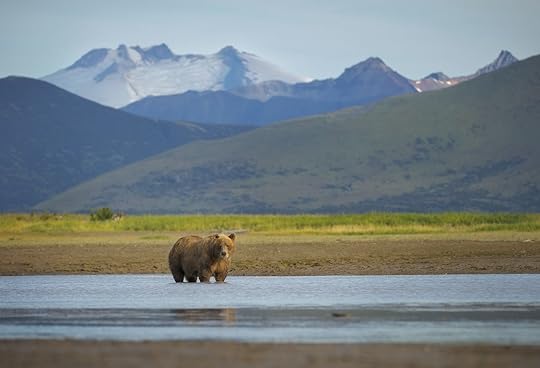
Photo: Chase Dekker/Shutterstock
2020 visitors: 51,511
Fat Bear Week sounds like the kinda thing you’d show up to accidentally during a family vacation to Myrtle Beach, and you’d either really love it or it would scar you for life. Fortunately, the real Fat Bear week is something completely different, an annual celebration in Katmai National Park, best known as home to over 2,000 brown bears. In early fall, the bears feast on sockeye salmon to see who can bulk up the most for the impending winter, and people literally take a week to vote on Facebook and crown the fattest.
But you don’t have to enjoy bears competitively salmon-gorging to make the most of Katami. Obviously, bear viewing is the big attraction. But like most national parks in the Last Frontier, this one is full of massive open spaces and few people. Hike through the Valley of 10,000 Smokes, where the 1912 Novarupta volcano eruption left a stark, eerie landscape. Or if you prefer to go in the spring, spend some time at Brooks Falls and wait for the formerly fat bears to emerge from hibernation as salmon dodge them in the Brooks River.
The only part of the park that’s anywhere near developed is Brooks Camp, which you can reach via float plane from nearby King Salmon. Getting to King Salmon isn’t terribly difficult, either, involving a short flight from Anchorage. Because no roads lead into the park, this is literally your only option — unless you want to go by boat, but you’ll need your own vessel as no commercial tours exist.
9. Dry Tortugas National Park — Florida
Photo: Mia2you/Shutterstock
2020 visitors: 48,543
Once upon a time, the red-brick hexagonal Fort Jefferson was a prison described by one inmate as “without exception, the most horrible place the eye of man ever set upon.” Now, these are the words of a man going to prison in Florida before the advent of air conditioning and bug spray, so take that for what it’s worth. But in ever-developing Florida, Dry Tortuga National Park and the fort located therein are among the few places that still feel truly remote.
Getting here isn’t easy, but is at least straightforward. If you’ve got your own boat, the park is about a 2.5-hour ride from Key West. Lacking your own boat, you can take a National Parks Service ferry for $175 or jump on a flight for about $300. Once there, you’ll be treated to the clearest turquoise water on the US mainland, where snorkeling with colorful fish can take up your entire day if you want it to. The marsh islands around the fort are also filled with rare birds like the black noddy and red-footed booby.
To make the most of the park, book a campsite and stay overnight. Daytime visitors are all gone by about 3:00 PM, leaving only you and the handful of other primitive campers on the island for the night. It’s a little like being Robinson Crusoe, if he had portable battery packs and knew he was leaving the next day.
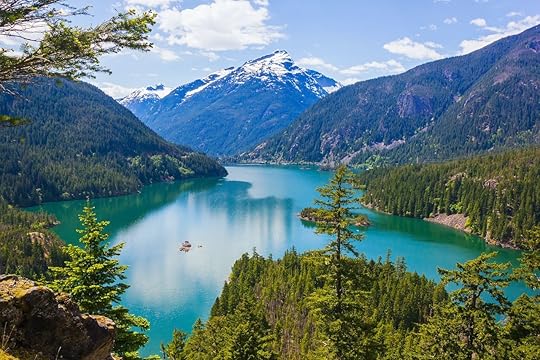
Photo: Anna Abramskaya/Shutterstock
2020 visitors: 30,885
Lost behind the skyline backdrop mound of Mt. Rainier and the lush rainforest of the Olympic Peninsula is Western Washington’s third national park, just east of Bellingham on the Canadian border. North Cascades National Park is home to some of the most dramatic scenery in the state, where you’ll find aquamarine mountain lakes sitting right under sharp snow-capped peaks — a little slice of Switzerland a couple hours’ drive from Seattle.
The park makes up one-third of the North Cascades National Park Complex, along with the Ross Lake and Lake Chelan National Recreation Areas. Those areas get slightly more visitors but are still worth paddling around while mountains reflect in the water. If you want a stiff challenge, try climbing Desolation Peak, whose trailhead is only accessible by boat and offers a hike that’s nearly all straight-up. Jack Kerouac spent the summer of 1956 here working for the forest service — if you want to impress your friends with some in-hike fun facts.
If you’re into rock climbing, you’ll find a great concentration of climbs here, most notably Cascadian Rock, and others with inviting names like Terror, Torment, and Fury. The good news is that you won’t be sharing the rocks with many other people. Despite being the closest seldom-visited park to a major city, North Cascades somehow still gets forgotten. All the better for you, getting all the beauty of the Pacific Northwest minus the ever-growing population.
7. Wrangell- St. Elias National Park and Preserve — Alaska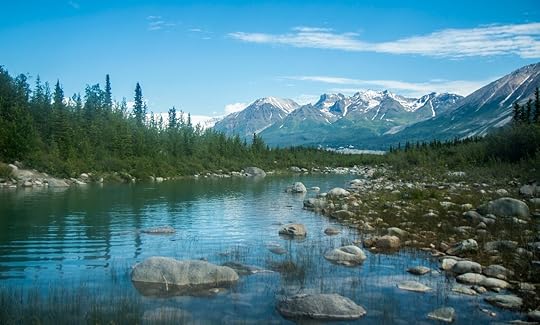
Photo: BlueBarronPhoto/Shutterstock
2020 visits: 16,655
The largest national park in the nation covers 13.8 million acres, stretching from the Gulf of Alaska through the St. Elias mountains. It’s a vast, remote landscape, though as Alaskan national parks go, it’s fairly easy to reach. By “easy,” we mean Wrangell- St. Elias National Park and Preserve is about a three-hour drive from Anchorage to the closest entry point at Glennallen and upwards of five hours to other parts of the park.
Inside the park, you’ll find some of the most spectacular drives in North America, with no other car in sight. Stop by one of the ranger stations and get a CD to play in your car as you bump along the Nabesna and McCarthy Roads. This way you’ll get a little explanation of the lakes, towering volcanoes, and thick boreal forest passing by your window. Just remember that the roads aren’t exactly what you’d call “smooth,” and getting from one part of the park to another can take over three hours.
Nature aside, you’ll also want to hit the old mining town of Kennecott. Like a relic frozen in the Alaskan cold, this town of red façades is on the National Register of Historic Places and stands as the best preserved example of the state’s mining legacy. You can take guided tours of the town, and its 14-story mill, before heading out to hike the rest of the park.
6. Kobuk Valley National Park — Alaska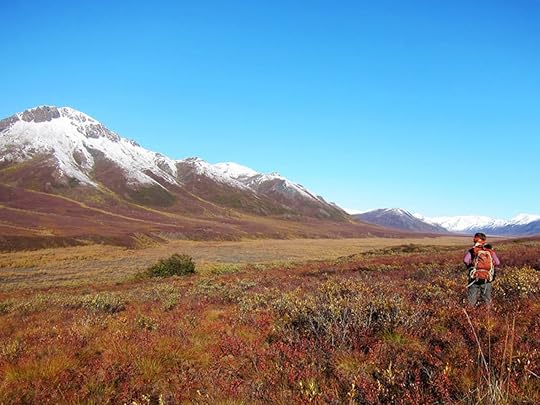
Photo: Northwest Arctic Heritage Center/Facebook
2020 visitors: 11,185
If you saw a picture of someone standing atop a sand dune well north of the Arctic Circle sweltering in 100-degree heat, you might think it’s some sort of scene of post-apocalyptic climate change. But that’s actually not at all uncommon in Kobuk Valley National Park, where glacially formed sand dunes shoot for 25 miles in different directions, and summer temps can reach into the triple digits.
If your desert trek through Alaska gets too taxing, you can always jump in the Kobuk and Salmon Rivers, both of which flow through the park. Much of the park is made up of the wetlands surrounding the rivers, and while you will see plenty of mountains in the Brooks Range, the valley itself is pretty flat. You’ll also definitely want to bring a guide with you as Kobuk Valley’s 1.7 million acres aren’t much for roads or signage. And if you get lost the only sign of civilization in the area are a handful of Indigenous Inupiat villages.
Getting here is no piece of cake either. No roads go here, and the only planes that fly to the park are air taxis from the thriving metropolises of Bettles and Kotzebue. Those cities are only accessible via flights from Fairbanks and Anchorage, respectively, and during summer it’s possible to be flown in with a packable boat and float your way through the park.
5. Isle Royale National Park — Michigan
Photo: Steven Schremp/Shutterstock
2020 visits: 6,493
Getting to Isle Royale National Park can be a little like living out Wreck of the Edmund Fitzgerald, as the icy waters of Lake Superior often make for a cold and tumbling ride. Of course, this park off Michigan’s Upper Peninsula is closed during the coldest months of the year, so your odds of getting caught in an ice storm are minimal. Still, the trip to this isolated patch of Michigan wilderness won’t be easy, with three-hour boat rides leaving from towns four hours north of Green Bay.
The island may be hard to reach, but unlike some of these seldom-visited parks, it offers a full-service lodge at the Rock Harbour Lodge where you can cook in your cabin or eat at the restaurant. If you’d prefer to spend time in the wilderness, you’ll likely have to contend with the abundance of moose who call the island home. Interestingly, they are part of the longest-running predator-prey study in America, examining their relationships with the island’s wolves.
You’ll also be right next to one of the greatest collections of wreck dives in America as 10 major wrecks sit right off the coast of Isle Royale. The cold waters have kept them better preserved than the wrecks you’d find in the Caribbean, and some date back to the 19th century. If you’d rather not bring a wetsuit, you can stay on top of the water and fish to your heart’s content.
4. Glacier Bay National Park and Preserve — Alaska
Photo: Paulina Rosales/Shutterstock
2020 visits: 5,748
Take one look at Glacier Bay National Park and Preserve, and you’ll understand why it ranks among the country’s least-visited national parks. A rugged expanse of icy waters, soaring peaks, craggy glaciers, imposing fjords, this formidable national park lets visitors know that it’s not for the faint of heart. Take a closer look at Glacier Bay, however, and you’ll start to wonder why one of the country’s wildest and most dramatic landscapes doesn’t attract more travelers.
Glacier Bay National Park and Preserve spans 3.3 million acres of southeastern Alaska’s coastline, roughly 93 miles west of Juneau and just 15 miles south of the Canadian border. It’s only accessible by boat or plane. Despite the challenges that getting there poses, the park is worth the effort to visit, rewarding travelers with both outdoor opportunities such as boating and sea lion spotting and the cultural education that comes with touring sites like the Huna Tribal House, which memorializes the bay’s Indigenous inhabitants.
Guided tours and ranger-led activities, which run the gamut from full-on hikes to gentle walks, make Glacier Bay National Park surprisingly accessible for any traveler. However, the park also delivers on the ruggedness its panoramas promise. For the truly intrepid, nothing beats epic backcountry camping beside alpine lakes after tackling more than 700 miles of trails.
3. Lake Clark National Park and Preserve — Alaska
Photo: Danita Delimont/Shutterstock
2020 visits: 4,948
Interestingly, Lake Clark National Park and Preserve, the second least-visited national park in America is only about a hundred miles from Anchorage, making it much easier to reach than some other parks lower down on this list. A short drive from Anchorage to Iliamna and an air taxi later, you’re right in the thick of some of Alaska’s most glorious wilderness, where the Chigmit Mountains stand watch over 6,300 square miles of untamed backcountry.
The coolest adventure in the park is a seaplane flight to Turquoise Lake, which, as the name might imply, shines a bright blue-green in the shadow of the mountains. You can spend a couple of days camping here if you like, where typically your neighbors will only be moose, birds, and the occasional bear. If you need something more than a tent, you can spend the night at the Silver Salmon Lodge, which offers fully furnished guest cabins and a full-service restaurant.
You’ll also find rugged Alaskan tundra at the Turquoise-Telaquana Plateau, thick forests along the coast, and miles of designated Wild and Scenic Rivers. If you’re looking to experience Alaskan wilderness in all of its grey-skied glory, you’ll get the best of it here. And best of all, it won’t take you days to reach.
2. National Park of American Samoa — American Samoa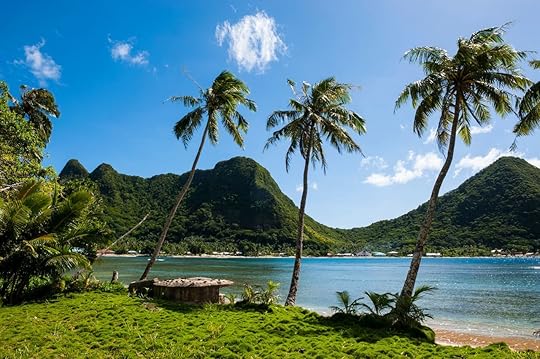
Photo: Danita Delimont/Shutterstock
2020 visits: 4,819
We can forgive people for never having visited this park in far-flung American Samoa, as even when you account for Alaskan bush flights it’s still the longest to reach. At minimum, you’ll have 13.5 hours of flying from the West Coast, traveling a full 2,600 miles southwest of Hawaii. But great things aren’t often gained easily, and such is the case with visits to the National Park of American Samoa.
Of the five islands that make up America’s southernmost territory, three of them — Tutuila, Ta’u, and Ofu — are part of this national park. The scenery looks nothing like the rest of America, including Hawaii, where sheer rock islands covered in tropical plants drop straight into turquoise water. The waters off Ta’u and Ofu offer clear access to coral reefs and over 900 species of tropical fish swimming around you. Or you can climb to the top of Mt. Alava, a relatively easy 7.4-mile trek that rewards you with a panoramic view of the islands.
Lodging is sparse here, and American Samoa offers the unique experience of a local homestay if you opt to spend the night on Ta’u. It’s the best way to learn about the oldest culture in Polynesia and will also involve a boat ride from a local fisherman. A visit is an almost surreal experience, planting yourself square in a foreign land that’s still somehow a US territory.
1. Gates of the Arctic National Park and Preserve — Alaska
Photo: https://www.facebook.com/GatesOfTheArcticNPS/photos/a.394784753872758/5666167260067788/?type=1&theater/Facebook
2020 visitors: 2,872
To put this into perspective, Great Smoky Mountain National Park got 12.1 million visitors in 2020 — which means it got about 4,000 times more visitors than the Gates of the Arctic National Park and Preserve. Its sparse visitation is understandable, though; Gates of the Arctic requires flying from Fairbanks to Bettles, Alaska, then taking an air taxi into the park. Once you’re there, you won’t find much in the way of amenities. And by that we mean no roads or toilets.
That said, if you’re looking to unplug and disconnect, this is about the ultimate place. Spread across the park’s 8.5 million acres, you won’t find more than about 50 people, and needless to say you won’t find cell service or WiFi either. You will, however, find adventures like kayaking down the Noatak River, where you’ll truly get the feeling you were the first person to ever explore the area. Hikes along the Central and Eastern Brooks mountain ranges — effectively the northern terminus of the Rocky Mountains — are equally awe-inspiring. You can summit the highest ones at about 9,000 feet and many at 3,000. No matter how high you are, gazing out at the park will give you the feeling that the land around is all yours. Or better, belongs to no one at all.
The National Parks Service doesn’t give recommendations on what to do at Gates of the Arctic because everything here is dependent on your skill level.You’re best advised to take a guide along with you and learn how to traverse the most untamed national park in America somewhere other than the internet. 
A version of this article was previously published on January 6, 2020, and was updated on July 2, 2021, with more information.
More like thisParks + WildernessThe best uncrowded state parks near the five busiest national parksThe post The 10 least-visited national parks in the US, and why you should go appeared first on Matador Network.
You can finally offset your travel emissions accurately and watch the trees grow
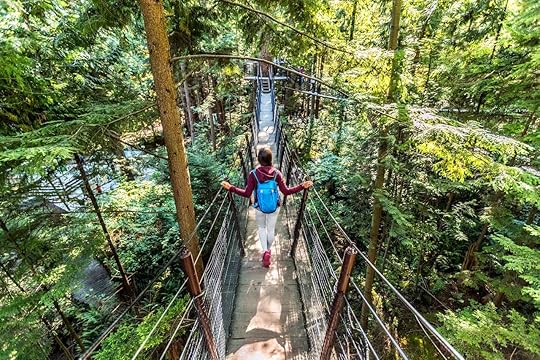
This is The Climate Win, the most positive sustainability news around the world every week.
For a few years now, travelers worried about the environmental impact of their vagabonding ways have turned to carbon offset programs promising to neutralize the negative impact of all those flights and Uber rides. Travel companies have done the same in an effort to gain the business of an increasingly concerned public. But are these offsets making a difference, or is it just “greenwashing?”
Pachama is a company founded by a pair of Argentinians on a quest to make the vetting process for carbon offsets easier to understand. And, to ensure that the dollars invested by its users actually make it to vetted projects. Often, it turns out, many offset programs aren’t all they’re cracked up to be.
When you contribute to a traditional carbon offset program, your donation typically goes to an environmental nonprofit in an amount intended to offset the carbon footprint of a specific activity you’ve undertaken — like a flight or road trip. Most major US airlines offer offset programs that calculate the total per-person emissions of your flight, and allow you to make a donation to offset that, directly through the airline’s website when you purchase your plane tickets or after you fly. Sometimes, a company whose employees travel will make large contributions in an effort to offset the emissions of all that travel.
The money often goes to tree planting and reforestation initiatives, or to the building of renewable energy infrastructure such as a solar farm. Some scientists and activists, however, have raised alarms about the “additionality” of these offsets — meaning, would they take place regardless of a vetted offset partner’s involvement? In other words, are the donations being made actually furthering an effort, or would that solar farm or reforestation have occurred even without them through, say, grants, government funding, or private investment?
Environmental groups including Greenpeace also argue that offsets, even if they do pull carbon from the atmosphere, are not a viable alternative to cutting emissions in the first place. What motivation does an airline have to move to cleaner jet fuel when the option is there to simply “offset” the pollution of its traditional fuel? A ProPublica report found that two major global offset initiatives dating back to the 1990s failed to produce anywhere close to the impact each had promised, and that buyers had thought they were contributing to, for reasons including a lack of sufficient initial funding from offsetters to create scaled impact and unforeseen policy issues that halted or reversed progress after it had begun.
Pachama aims to fill the gap between carbon offset donation and follow-through by using a technology it developed to measure the carbon sequestration of an area of forest, identify what needs to be done to protect or grow it, and create vetted offset credits in the form of an donation investment portfolio to do just that. It puts conservation and reforestation efforts into these “portfolios” based on location and lets users choose which portfolio to support. It then measures the impact of each portfolio on an ongoing basis, providing reports to donors about the specific impact their money has made.
Let’s say you are a resident of New England, or are a visitor who just completed a trip there. You may elect to donate to Pachama’s Northern Atlantic portfolio, currently working to protect forested areas surrounding the Alligator River and Pocosin Lakes and to improve management on a large-scale farming operation. Worried about deforestation in South America rainforests? You might consider a donation to the Amazon portfolio, fighting three deforestation efforts in Brazil and two in Peru.
To date, Pachama users have helped protect four million acres of forest in 12 countries. Companies can buy offsets for the organization or allow individual team members to contribute, and you could also create an account and track your impact on your own. The result is a more effective way to offset at least part of your carbon footprint — with the perk of being kept in the loop about what your money is doing.
More climate wins this weekThe US Environmental Protection Agency has pledged $50 million toward environmental justice under the American Rescue Plan, announced on June 25. This money is designated to be distributed as “grants, contracts, and other agency activities that identify and address disproportionate environmental or public health harms and risks in underserved communities through a range of local initiatives” in underserved communities around the country, the EPA noted in the news release.
Oregon’s House of Representatives passed a bill this week that would require 100 percent clean energy by 2040, with interim goals of 80 percent by 2030 and 90 percent by 2035. The bill is expected to pass in the state’s senate and be signed by Governor Kate Brown.
In a good read on reducing the carbon footprint of our food systems, Dezeen reported this week on a company called Solar Foods, which is making a protein powder out of microbes that metabolize carbon dioxide. The result is a new meatless protein that uses less land to produce than traditional agriculture, including vegan proteins like farmed soy and nuts. 
The post You can finally offset your travel emissions accurately and watch the trees grow appeared first on Matador Network.
July 1, 2021
TikTok star Kallmekris nails 25 accents in 5 minutes

TikTok star from British Columbia, Canada, who goes by Kallmekris, is trending on YouTube for her “25 Accents in Five Minutes” video, a hilarious take on English accents around the world.
Glistening with sweat from the British Columbia’s unprecedented heat wave, Kris kept her cool and her smile in the 113-degree heat to offer up whimsical accents from across Canada, the United States, Australia, New Zealand, Ireland, England, and Scotland. She even threw in English accents from French, German, and Russian speakers.
Kris’ video amassed hundreds of thousands of views overnight. In it, she admits that Canadians really do say “Eh” a lot, US Midwesterners could say anything at all and still sound friendly, and that Californians lengthen the last word of every sentence.
Her TikTok channel’s popularity soared during the pandemic, earning her nearly 32 million viewers and over 1.4 billion likes. One of Kris’ specialties is impressions from popular TV and movie characters, some of them animated and many from other countries, so it was a natural move for Kris to take on how real people speak.
In nice Canadian fashion, Kris is careful to say that she knows not everyone from these regions sounds this way and she means no offense to anyone. She seems genuinely inspired by each of these English accents — be it from Brooklyn or Boston, Quebec or California. In her comments, she also invites viewers to offer corrections and to suggest other accents they’d like to hear. 
The post TikTok star Kallmekris nails 25 accents in 5 minutes appeared first on Matador Network.
California’s largest dispensary just opened, and it’s a full-on cannabis theme park

When it comes to buying recreational cannabis, there are dispensaries and then there are high-design centers where the purchase of weed is just one aspect of the experience. California’s largest dispensary, Planet 13, opened on July 1 and falls squarely in the latter category.
Planet 13’s Orange County location (the company’s name stems from how “M” — for marijuana — is the thirteenth letter in the alphabet) is located in Santa Ana close to both Disneyland and Knotts Berry Farm. It’s the second Planet 13 location — the first opened in Sin City in 2018, and Matador named it one of the top dispensaries in Las Vegas thanks to water displays, an LED roof, and 40,000 square feet of space.

Photo: Planet 13/Facebook
From the looks of it, the Orange County location is no less appealing. There’s an 80-foot-wide digital waterfall, a sand-and-shore display that leaves digital footprints when you walk over it, and a Volkswagen van that puffs out fake smoke to make it look like the people inside just hotboxed the vehicle. Oh yeah, there’s also 50 registers and some 250 workers to help you complete the task you likely came for: actually buying cannabis.
Possibly the most exciting aspect is that the opening is only the first phase. According to the LA Times, an indoor rain simulation will come from the ceiling and 18-inch mechanical butterflies will float around like some sort of upside down Alice in Wonderland trip. A center for in-house cannabis products will also be added down the line, as well as a 15,000-square-foot public consumption lounge complete with a splash pool.

Photo: Planet 13/Facebook
It seems fitting that Planet 13’s two locations are in areas known for over-the-top, amusement-park-esque experiences. As draconian laws and drug policies change across the country, these beacons of marijuana signal what’s next in cannabis tourism. Yes, it may be easier to go to a smaller dispensary for a quick trip, just like it’s easier to watch Disney channel if you want to see your favorite characters. But that doesn’t mean a trip to Disneyland every once in a while isn’t worth the experience. 
The post California’s largest dispensary just opened, and it’s a full-on cannabis theme park appeared first on Matador Network.
The world’s most affordable cities for urban vacations in 2021

Major cities aren’t exactly known for their affordability. The mere suggestion of traveling to a large city in another country can immediately conjure images of expensive restaurants, overpriced trendy cocktail bars, and accommodation priced about $100 higher than its quality and cleanliness warrant. Not all cities are budget-breakers, however. Luggage storage company Bounce analyzed 75 popular city break destinations to find the most affordable cities for urban vacations. To arrive at the final list, it looked at the cost of five travel essentials — hotel rooms, meals at local restaurants, public transport tickets, a bottle of wine, and a cold beer.
According to their findings, these are the world’s 10 most cities for urban vacations:
Buenos Aires, ArgentinaIstanbul, Turkey Rio de Janeiro, BrazilSt. Petersburg, RussiaKrakow, PolandMoscow, Russia Porto, PortugalBudapest, HungaryKuala Lumpur, MalaysiaSantiago, ChileBuenos Aires took the top spot largely thanks to its cheap wine (just $3.10 per bottle) and extremely reasonable public transportation cost ($0.27 for a one-way ticket). Istanbul followed closely behind, at just $.40 for a one-way travel ticket and its similarly cheap taxi fares, while Rio de Janeiro has the distinction of being the cheapest city on the list for draught beer, which costs just $1.34.
Bounce also analyzed the world’s most expensive cities for tourists, so if you really don’t mind shelling out some extra dough on vacation, these are the destinations for you:
Zurich, SwitzerlandReykjavik, IcelandGeneva, Switzerland New York City, United StatesLondon, EnglandCopenhagen, DenmarkSan Francisco, USA Boston, USA Las Vegas, United StatesAmsterdam, Netherlands More like thisFood + Drink10 of the most pungent, salty, and tangy fermented foods from around the world
More like thisFood + Drink10 of the most pungent, salty, and tangy fermented foods from around the worldThe post The world’s most affordable cities for urban vacations in 2021 appeared first on Matador Network.
You won’t appreciate the power of the pickle until you try the ones served across Asia

The American understanding of what a pickle can accomplish is woefully inadequate. Don’t get me wrong, pickles in the US are delicious, mildly salty, satisfyingly crunchy, and refreshing spears that pair perfectly with hot dogs and cold cut sandwiches, but people in the US hardly value the versatility of the pickle. To understand just how flavorful and multifaceted a pickle can be, we have to look to Indonesia, China, India, and Vietnam — the entire region in fact — where pickles are a dietary staple.
First of all, pickles are not just cucumbers. Pickles, pan-Asian cuisine tells us, can be papaya, mango, mushrooms, daikon, limes, cabbage, or eggplant. And while people in some countries, like Japan, keep their pickling methods simple — often massaging a salt brine into vegetables like cucumber, resulting in a crisp, palate-reviving bite — most other countries, especially those in Southeast Asia, rely on complex layers of flavors to season their pickles.
“Pickles, whether they’re fermented in vinegar or a salt brine, add so much flavor and texture to a meal,” says Patricia Tanumihardja, author of Asian Pickles at Home, a collection of recipes for pickled sides and condiments from across Asia.
Tanumihardja, who’s Indonesian and Chinese, grew up eating pickles with nearly all of her meals. Her mother paired mie goreng (Indonesian spicy fried noodles) with pickled cucumber, carrot, and cauliflower; the “extra crunch” pairs perfectly with the soft noodles. She’d sometimes cook the pickles, too, adding pickled mustard cabbage and pickled plums to a chicken and pork soup alongside fresh tomatoes. The complex flavor profile, Tanumihardja says, is “sweet, tangy, salty, savory, all at the same time.”
In the course of her research, Tanumihardja found that pickled vegetables and condiments are a staple at the grocery store and the dinner table across Asia. But that’s where the similarities end. In Malaysia and Indonesia, for instance, pickles are seasoned with palm sugar, lime juice, shallots, and red chilies. But in India, the most common seasonings are turmeric, cardamom, and cumin. Japanese people prefer a minimalist rice bran pickle, whereas in India, the pickled vegetables are preserved in spicy oil.
The richness of these flavors lends itself to so much more than the humble American pickle, which finds itself mostly accompanying sandwiches. In Vietnam, pickles are served with soup, while in Japan a specific type of pickle called gari is served as a palate cleanser with sushi.
Tanumihardja, who keeps at least three jars of pickled vegetables in her fridge at all times, often mixes a grain, like farro, quinoa, or rice, with a fried egg and tops the dish with pickles — similar to bibimbap. She encourages people who are new to pickling to be “a little bit adventurous,” because pickling is a “worthwhile investment.”
These pickles might look different than those we’re used to in the West, but with a cornucopia of possibilities for spice, zest, and sweetness, exploring pickling techniques from across the continent should be a no brainer. Here are five ways to pickle vegetables inspired by recipes from across Asia.
Malaysia: Acar nenas dan timun
Photo: Dolly MJ/Shutterstock
In Malaysia, pickles are known as acar and typically served as a condiment or a side dish for grilled fish or fried rice. Malaysian acar recipes like acar nenas dan tumin combine two of the country’s favorite pickling ingredients: cucumber and pineapple. Another version, called acar awak, especially popular among the Nyonya people, mixes cabbage, carrots, long beans, and peanuts in a pickled sauce made from tamarind juice, and then it’s all heated up with Malaysian paste.
Japan: Tsukemono
Photo: norikko/Shutterstock
In Japan, tart and tangy pickled vegetables are called tsukemono. According to the Japanese recipe blog Just One Cookbook, tsukemono are served to “refresh the palate and provide refreshment to counter the heaviness of rich foods.” Often, Japanese pickling methods are simple and usually call for vegetables like cucumbers or daikon to be soaked in either a salt brine or rice bran. Shoyuzuke refers to the specific method of pickling vegetables in soy sauce; shoyuzuke recipes often add heat and spice with garlic and red chili peppers.
Vietnam: Ca phao muoi
Photo: /Shutterstock
Pickled whole golf-ball sized eggplants (also sometimes known as Kermit eggplants) are one of the most popular pickled snacks in Vietnam and come in many varieties — mắm cà phá, for instance, refers to eggplant fermented in fish sauce. The salty, crunchy eggplants are jarred and sold at grocery stores. Sometimes served as a condiment or side for steamed rice, pickled eggplant is also a common accompaniment to the many soups that define Vietnamese cuisine.
India: Naranga achar
Photo: yoamod/Shutterstock
The most distinctive characteristic of Indian pickles is that they’re fermented in oil to preserve the vegetables and prevent fungal growth. Naranga achar are spicy pickled limes, a common accompaniment to lentil curries and rice, or with paratha (Indian flatbread). Achar, which often contains pickled mangoes, also stands out because it doesn’t back down on heat. It’s often seasoned with spices that don’t appear in other Asian pickle recipes, like turmeric powder, mustard, and fenugreek seed.
Indonesian: Asinan buah
Photo: E Dewi Ambarwati/Shutterstock
The Javanese palate is attuned to sweetness, and this pickled fruit salad is a perfect mixture of salty tang, sweet, and sour. Brined in a mixture of vinegar, salt, and palm sugar, asinan buah usually includes some combination of cucumber, mango, jicama, and pineapple. Unlike many other pickles on this list, asinan buah is served as a snack on its own, rather than a condiment, but it’s also the perfect side dish for grilled meat. It’s especially popular in Bogor, a city in West Java, where you’ll find it at restaurants and at street vendors. 
The post You won’t appreciate the power of the pickle until you try the ones served across Asia appeared first on Matador Network.
A new initiative is making Costa Rica a top choice for female travelers
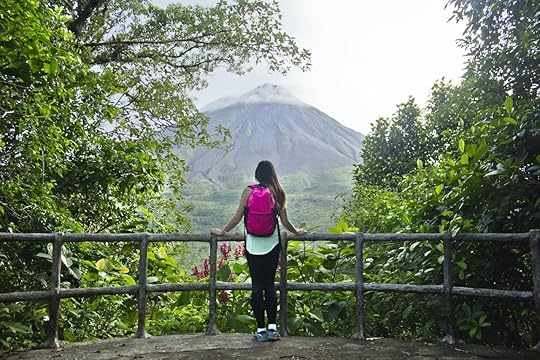
It doesn’t take much to convince travelers to visit Costa Rica. The beaches, jungles, cuisine, and pura vida lifestyle sell themselves. Now, a collaborative initiative between the Costa Rica Tourism Institute, National Women’s Institute, and National Commission for Tourism Security is giving female travelers yet another reason to boost Costa Rica to the top of their travel lists: the SOFIA Network, which “seeks to foster equality and safer travel environments.”
Launched on March 22, 2021, the SOFIA Network is the first tourism effort in Costa Rica targeted toward women and solo female travelers. Advancing gender equality and suppressing violence against women as tourism rebounds are chief among the initiative’s goals.
Women’s Condition Minister and National Women’s Institute Executive President Marcela Guerrero shared the following statement: “During pandemic times, when tourism has been impacted, we ask the commitment of every person in the industry and the tourism community, with the objective of guaranteeing equality between women and men in the Costa Rican tourism sector, eradicate violence against national and foreign women, and promote safe environments for tourists, as an axis of responsible, sustainable, and inclusive tourism.”
To meet these objectives, SOFIA Network is appealing to both the public and private sectors by inviting all actors in the tourism industry and local communities in heavily touristed areas to participate in a free and voluntary program. To participate, businesses and individuals can earn a SOFIA Network seal by studying the “Guide to Best Practices for Safety in Tourism Operations.” Businesses are required to prove that at least 80 percent of their staff have taken the course, which is valid for two years before requiring renewal.
According to Costa Rican Minister of Tourism Gustavo J. Segura, involvement in the program will “promote the pleasant permanence of tourists by strengthening the industry’s professional skills” and “build a peaceful, prosperous, and sustainable environment in a world where women are more independent and enjoy traveling alone.”
The push to make female travelers feel more comfortable in Costa Rica is not only socially significant but also statistically sound. According to data gathered by the Costa Rican Tourism Institute, in 2019 an estimated 15.8 percent of non-resident arrivals in Costa Rica were solo female travelers, totaling nearly 400,000 women. If that many female travelers were already fulfilling their dreams of a solo trip to Costa Rica, we can only imagine how those figures will skyrocket once news of the SOFIA Network gets out. 
The post A new initiative is making Costa Rica a top choice for female travelers appeared first on Matador Network.
9 tips for an awesome trip to Maui
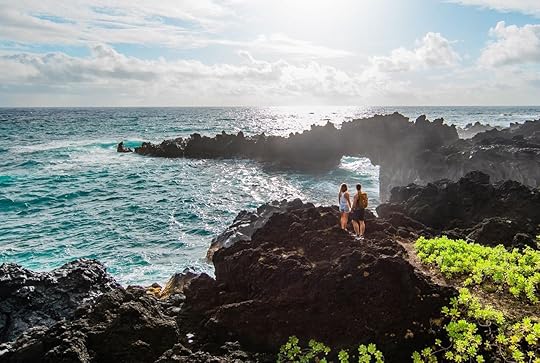 We all have different feelings about traveling right now. When you’re ready, we hope you feel safe, inspired, and excited to join us on the Island of Maui. Read more about current safety protocols.
We all have different feelings about traveling right now. When you’re ready, we hope you feel safe, inspired, and excited to join us on the Island of Maui. Read more about current safety protocols.Maui deserves to be the central focus of your Hawaii trip. Unreal beaches and winding, cliffside roads — with farm-to-table fare around every serpentine corner — fringe the coasts, while a unique and storied culture runs through the heart of the isle, with age-old customs still practiced to this day.
Less mainstream than Oahu yet with plenty of tourist amenities should you need them, Maui strikes a balance that everyone from solo adventurers to honeymooners to families with young kids can appreciate. There are five regions to explore — West, Central, South, East, and Upcountry — each with a distinct regional vibe. Wherever you wind up, here are nine tips for an awesome trip.
1. Practice malama aina.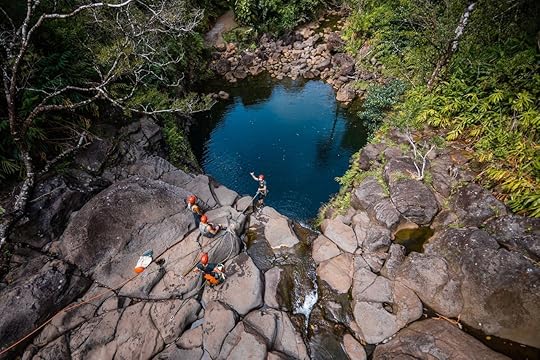
Photo: Tommy Lundberg/Hawaii Tourism Authority
The verb malama describes the core of Hawaiian culture: accepting one’s responsibility to both other people and nature. It’s at the heart of everything on the islands, from business practices to land use policies. When you’re here, keep in mind that you’re a guest on Hawaiian land, and the best way to honor your hosts is by enjoying local food, asking questions, listening to stories, and treating those around you with kindness.
Aina means land — so to practice malama aina is to be a steward of the island (and yes, that includes not just the land but the ocean as well!). Think of Maui as one giant national park: The only traces you should leave are your footprints. Respect for the environment is respect for the people who live here, which in turn is respect for the spirit of malama aina.
2. Be smart about where you stay and how you get around.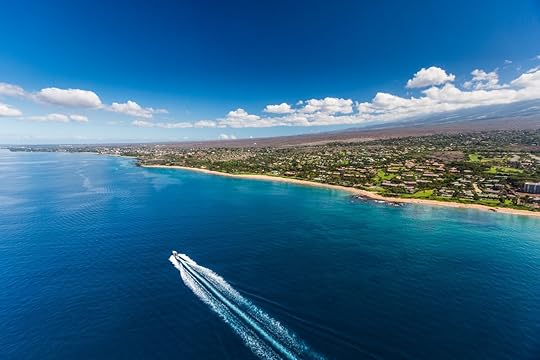
Photo: Tor Johnson/Hawaii Tourism Authority
Most of Maui’s major resorts and hotels sit on the western and southern shore in Kapalua, Kaanapali, Lahaina, and Wailea. These offer all-inclusive stays, beachside access, and luaus. For a more intimate local experience, rent a vacation property in a small town. Just be aware of scams — if a deal seems too good to be true, it probably is. You can easily get to bottom of things in a few minutes of internet research.
While hotels in resort areas like Kaanapali sometimes offer complimentary transfer services from the airport, your best bet is to rent a car (you can do this at the Kahului and Kapalua airports). Without your own wheels, you’ll be beholden to taxis, city buses, hotel shuttles, or tour buses. To guarantee a vehicle, reserve in advance.
When on the road, remember to follow aloha traffic customs: Drive slowly, let the locals pass, never tailgate or park on the road (especially on the snaking Hana Highway), and always stop for snacks at the fruit stands.
3. Prepare to chill…and be chilled.
Photo: Tor Johnson/Hawaii Tourism Authority
Leave your suit and tie behind for this trip — Maui’s laid-back culture rarely calls for formal wear. Opt for sandals, light dresses, and linen shirts when you’re heading out on the town.
However, you may need outerwear: A light jacket or sweater will help ward off the wind in the evenings, and you’ll want a heavier jacket (and/or a raincoat or windbreaker) if you’re planning on visiting Haleakala National Park. Pack some sturdy closed-toe shoes for this part of the trip, too.
4. If you climb Haleakala for sunrise, make sure to stick around.
Photo: Max Wagner/Hawaii Tourism Authority
While a trip up to the summit of Haleakala volcano — Hawaii’s third highest at 10,023 feet — is beautiful any time of day, sunrise is the Instagram-famous stunner. To secure a spot, you’ll need a reservation (up to 60 days in advance) and an alarm clock. It can easily take two hours to get up there, you’ll want to arrive before dawn, and sunrise always happens before 7am.
Those who come for sunrise often make two mistakes: wearing shorts and leaving soon after. It can be 30 degrees colder at the summit than at sea level, and Haleakala doesn’t quit after sunrise. The hiking, sunset watching, and stargazing opportunities are life-alteringly impressive, too.
Tip: Consider tacking on a visit to MauiWine, a 45-minute drive to the southwest. Try the Maui Blanc, made from hand-picked pineapples.
5. Don’t miss the drive along the Hana Highway…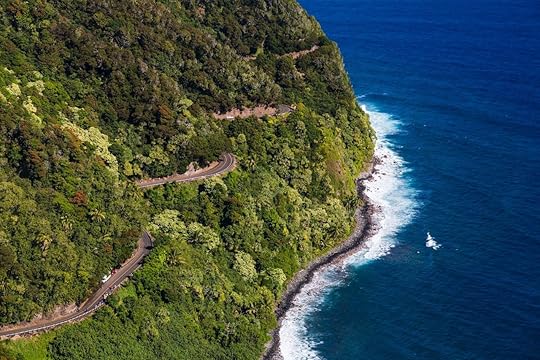
Photo: Tor Johnson/Hawaii Tourism Authority
The Hana Highway, which winds for 52 miles along the island’s northern coast, holds every element of an iconic Maui road trip: narrow bridges, cliffside views, food stands, and more than 600 white-knuckle, hairpin turns.
It can take anywhere from two hours to a full day to drive its length, depending on how often you stop for photos and snacks. Start in Kahului in Central Maui and head east until you reach Hana, a small coastal town with a loose relationship with time and a true aloha way of life.
6. …but adhere to the “Road to Hana Code of Conduct.”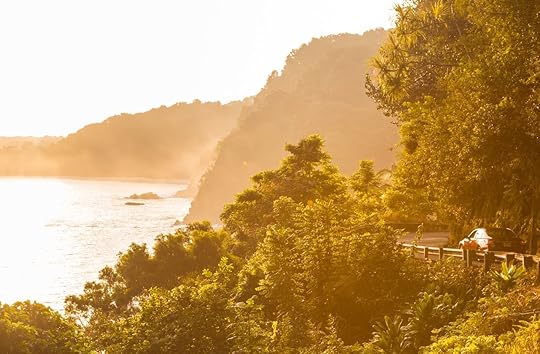
Photo: Tor Johnson/Hawaii Tourism Authority
With those aforementioned narrow bridges, blind curves, and plenty of reasons to stop, the Hana Highway requires that drivers be smart and aware. Though the full list is longer, here are some of the key points from the Code of Conduct:
Yield to oncoming traffic at bridges.Make sure you’re not blocking traffic if you stop for photos. Any cars stopped on the highway are subject to towing.If cars are building up behind you, find a pullout and let them pass.Use state parks, fruit farms, and rest facilities for breaks.Don’t leave anything behind, especially litter.Dust and decontaminate your gear before entering East Maui from West Maui and vice versa (to deter invasive species).And, finally, take it easy on the drive. You’re here to enjoy yourself.
7. Be willing to ask permission.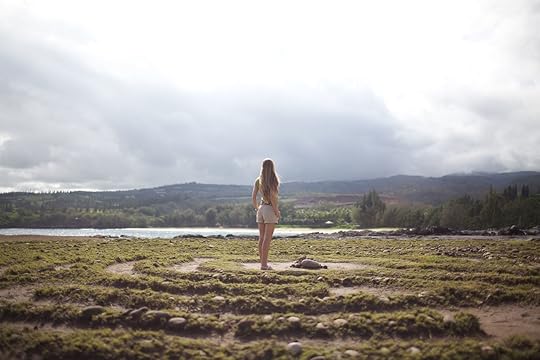
Photo: Max Wagner/Hawaii Tourism Authority
One of Hawaii’s long-standing customs is oli, or the idea of asking permission. Do this, and doors will open to you. It’s a customary sign of respect, humility, and appreciation.
While you may not be chanting an oli to the forests, you should ask your guide where it’s appropriate to wander off-trail. Ask a local if that nearby postcard-perfect waterfall is on public land. If it’s not, ask if the owners are amenable to visitors. Do strike up conversations with islanders — many will open up their homes, or at least their local knowledge, to you if you politely ask.
8. Eat local, and definitely visit the farm stands.
Photo: Dana Edmunds/Hawaii Tourism Authority
Chow down on hamburgers made with hyper-local beef and feast on haupia, a coconut-milk dessert. Maui’s heritage — traditional roots blended with years of Asian and mainland US influence — means you can get everything from the day’s spearfished catch at Lahaina Grill to authentic Japanese sushi at Sansei Seafood Restaurant & Sushi Bar. (Looking for ocean views while you dine? Try Mama’s Fish House.)
Regardless of the cuisine, Hawaiian cooking is united by some common tenets: the use of high-quality, local ingredients and sharing generously. There’s a word for this way of eating: kuleana, the responsibility to only take what you need and serve it with love.
Of course, sometimes you have to head outside the dining room to get the freshest produce. Roadside stands, especially along the Hana Highway, are hands-down the best place to get your paws on papaya, mango, pineapple, and coconut.
9. Remember that no two beaches are the same.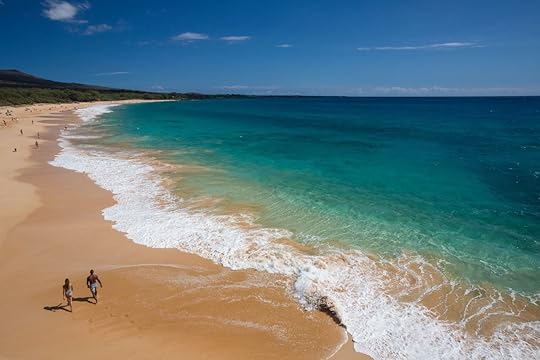
Photo: Tor Johnson/Hawaii Tourism Authority
You don’t have to be a surfer to enjoy the massive winter waves of Honolua Bay, as the bluffs above the bay offer an excellent vantage point for you to hang-ten vicariously. The same goes for Hookipa Beach, the “windsurfing capital of the world,” with constant east-facing trade winds making it a playground for pros.
For Maui’s famed black sand, you’ll want to head to Waianapanapa State Park on the east shore. It’s ideal for families, with excellent camping facilities, safe swimming spots, and freshwater pools to explore.
Kihei, in the southwest, is best for beachcombing and whale watching, thanks to its proximity to the main humpback migration route (visit from October to April to catch a glimpse). Kealia Pond National Wildlife Refuge, at the north end of this region, is a prime destination for bird watchers on the lookout for endangered Hawaiian stilts and coots.
And Although most of Maui’s beaches are great for snorkeling, Molokini — a small, crescent-moon-shaped island just three miles off the coast — is far and away the leading site for diving into the island’s moving kaleidoscope of tropical fish, like butterflyfish and unicornfish. It’s like a microcosm of Maui itself: so many worlds to explore. 
The post 9 essential tips for an awesome trip to Maui appeared first on Matador Network.
June 30, 2021
10 luxurious Airbnbs for your Napa Valley bachelorette party

We hope you love the spaces and stays we recommend! Just so you know, Matador may collect a small commission from the links on this page if you decide to book a stay. Listed prices are accurate as of the time of publication.
Location is key when considering Airbnbs for a bachelorette party in Napa because the Valley is more than a one-stop-shop. Stretching 30 miles from tip to tail and flanked by its lesser-known but equally charming sister Sonoma Valley, Northern California’s wine country offers an unforgettable backdrop to a girlfriend’s wine and dine getaway. While most Airbnb listings have acres of beautiful vineyards and complimentary wine on arrival, take care to select one that meets your party’s bachelorette vision. Here we’ve simplified the search by compiling a list of luxury Airbnbs in Napa Valley towns that will take your party to the next level.
1. Renovated historic home in the heart of Napa
Photo: Airbnb
Walkable to downtown Napa, this stylish home is the ideal base for your bachelorette bash. The Arbor House was previously a B&B, so all four bedrooms have a spacious footprint and ensuite bathrooms. The historic home is beautifully modernized and well-designed for groups. Challenge your friends to a bocce ball match in the garden, then head into town for Michelin-Star dining, live music, and Instagram-worthy wine bars. Downtown Napa is a hub for boutique shopping and is surrounded by wineries in every direction.
Eight guests, four bedrooms
Price: $917 per night

Photo: Airbnb
The Oxbow House is a contemporary home that sleeps six and it will dazzle your guests with its impeccable interior design and stunning chef’s kitchen. After a day of wine tasting, you’ll enjoy the relaxing outdoor space complete with casual garden games. Be sure to pop into the Oxbow Public Market to peruse the vendors and nosh on cheese plates, fresh oysters, and flights of sparkling wine. And if you thought Venice was the only place for gondolas, surprise your friends with a cocktail cruise aboard the nearby Napa Valley Gondola.
Six guests, three bedrooms
Price: $1109 per night

Photo: Airbnb
If your list of besties is particularly large and your budget is generous, check out the White House Inn, which can be fully retained for private events and host up to 16 overnight guests. Breakfast service, housekeeping, and full-time staff are included in the price. You can even request hosted meals and planned excursions as easy add-ons. The grounds include a sparkling pool with cabanas, manicured gardens, and outdoor dining nooks. The guest rooms are lavishly furnished and have white marble ensuite bathrooms. If you weren’t feeling spoiled enough, the location is ideal — just half a mile to the center of town.
Sixteen guests, 17 bedrooms
Price: $9000 per night

Photo: Airbnb
Napa Valley is known for the Silverado Trail, which runs the length of the valley and is dotted with wineries and tasting rooms. Equally well known is the Silverado Resort and Spa, a superb choice for a girlfriend’s getaway. This contemporary home has an open floorplan that extends to a spacious patio overlooking the golf course. The resort property offers an array of amenities including pools, tennis courts, restaurants, and luxury spa services. Hop on beach cruiser bikes to enjoy an afternoon of wine tasting; no designated driver required.
Six guests, three bedrooms
Price: $917 per night

Photo: Airbnb
The Ink House in St. Helena is a luxurious option for a splurge-worthy bachelorette party. The décor is lavish in all the right ways. Each recently remodeled room includes an ensuite bathroom and the outdoor space is sure to match the bride’s vision of a five-star, wine-country retreat. St. Helena’s Main Street bustles with boutiques and upscale bistros. It’s also the boarding point of the Napa Wine Train, which offers many itineraries, including an elegant Estate Winery Tour and a breathtaking Castle Winery Tour. Be sure to book in advance.
Eight guests, four bedrooms
Price: $2974 per night

Photo: Airbnb
Slightly smaller groups that prefer to be right in town should consider this beautifully renovated home just off Main Street in St. Helena. Designer details are everywhere in this three-bedroom, three-bath home and the outdoor space is magazine-worthy. Prior guests rave about the snazzy, hot tub/pool with 26 jets and two relaxation stations. There’s even a fitness room with Peloton Bike and Peloton Tread. Several desirable farm-to-table restaurants are located within walking distance, and there’s certainly no shortage of wineries.
Six guests, three bedrooms
Price: $1395 per night
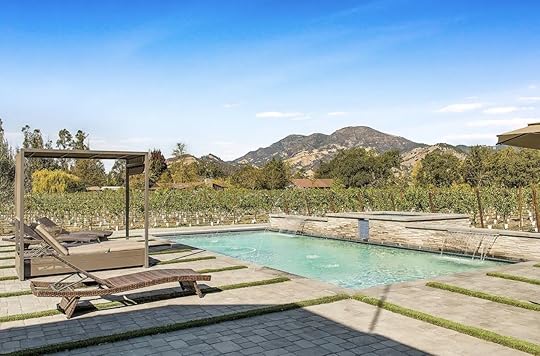
Photo: Airbnb
Calistoga is yet another great town at the north end of Napa Valley. Known for its hot springs and luxury mud bath traditions, Calistoga is the ideal locale if unique and extravagant spa treatments are a high priority for your bridal party. This gorgeous retreat blends white marble with reclaimed wood, creating a rich yet approachable vibe. Start your day with poolside mimosas or a pre-dawn hot air balloon ride with Calistoga Balloons. Round out the day with a cave tour at Joseph Cellars Winery or a gondola ride above Sterling Vineyards.
Eight guests, four bedrooms
Price: $1500 per night

Photo: Airbnb
This stunning Xanadu estate will please the pickiest of brides. Its contemporary style and attention to detail is apparent throughout. There are sweeping valley views from nearly every window and folding patio doors to the pool deck and outdoor play areas. This eco-friendly home is solar-powered and surrounded by drought-resistant landscaping to appeal to conservation-minded guests. Several private wine tour operators are based in Healdsburg and offer a bachelorette “Bubbles Tour” of sparkling wine hotspots plus gourmet nibbles.
Eight guests, four bedrooms
Price: $1495 per night

Photo: Airbnb
The whole squad will fit into Casa Sebastiani, with six bedrooms, five bathrooms and large entertaining spaces. This Tuscan style villa sits within the grounds of Sebastiani Vineyards and Winery, so tipsy bachelorettes can enjoy wine making tours and tastings on-site; no driver needed. Guests rave about the outdoor spaces, private pool, and sweeping views. Book a private chef through the villa’s SuperHost, or walk less than a mile to shops and Michelin-rated restaurants in town. There are well-known wineries around Sonoma and they offer a wealth of wine-lover experiences.
Fourteen guests, six bedrooms
Price: $2094 per night

Photo: Airbnb
Just a short stroll from Sonoma’s town square, this adorable bungalow is surprisingly spacious and the price is a win. It has four bedrooms, an open and updated kitchen, plus a lovely back garden with a hot tub. The SuperHost is highly ranked in the Sonoma area and known for quick responsiveness. Dining options at all price points surround the central plaza. Cornerstone Marketplace is a nearby alternative, where you can wander through the art and garden installations, enjoy complimentary live music, and affordable dining options. 
Ten guests, four bedrooms
Price: $358 per night
The post 10 luxurious Airbnbs for your Napa Valley bachelorette party appeared first on Matador Network.
The tastiest road trip itinerary through America’s Barbecue Belt

Different styles of barbecue are popular around the world. Some are done in underground pits, others in slow smokers that burn through the night. And while it’d be a monumental task to taste every style out there, it’s undeniable that some of the best slow cooked meats can be found on a barbecue road trip through the Southern United States.
Yes, there are under-appreciated barbecue styles elsewhere in the country — California’s Santa Maria-style, Chicago barbecue, and Hawaiian barbecue come to mind — but the styles served up in the South are most often what people think of when they talk about classic American barbecue. Fasten your seatbelt for a road trip around the Barbecue Belt.
Central TexasBrisket — a cut from the lower chest of a cow — is king in Texas. That’s especially true in central Texas. In Austin and smaller cities around the middle of the state, hunks of brisket are typically given a simple dry rub treatment with salt and pepper before being smoked over mesquite, oak, and hickory for 12 to 24 hours. The meat is full of flavor despite the simple preparation thanks to the low and slow cook time and natural fattiness of brisket. Each bite has a crisp outside crust and a juicy interior.
There are a lot of famous Texas barbecue spots out there to add to a barbecue road trip. To taste some of the most iconic examples, stop by the spots with the highest accolades: Franklin Barbecue (900 E 11th St, Austin, TX 78702), Snow’s (516 Main St, Lexington, TX 78947), and Louie Mueller Barbecue (206 W 2nd St, Taylor, TX 76574).
Kansas CityKansas City has a long history with barbecue, and the city’s pitmasters have a strong influence on barbecue across the country. Consider, for proof, that there are about 100 barbecue restaurants in Kansas City and it’s the home of the American Royal World Series of Barbecue.
Here, slow-cooked beef covered in a thick and sweet molasses-based sauce is the most iconic, but pork, chicken, sausage, turkey, and fish all commonly make barbecue menus as well. Be sure to order the burnt ends if they’re available, which are the charred bits at the end of a slab of brisket.
Start with the following for any visit where the goal is to explore what Kansas City has to offer on the barbecue front: Arthur Bryant’s Barbecue (1727 Brooklyn Ave, Kansas City, MO 64127), Joe’s Kansas City Bar-B-Que (3002 W 47th Ave, Kansas City, KS 66103), and Slap’s BBQ (553 Central Ave, Kansas City, KS 66101).
MemphisKansas City and central Texas can have their beef ribs. In Memphis, the focus is on pork — specifically slow cooked pork ribs and pork shoulder sandwiches. There are more than 100 barbecue restaurants in Memphis. The style traditional to the city is to either serve the ribs dry (meaning with a dry rub) or wet (slathered in sauce). The sandwiches typically are chopped pork shoulder.
Breaking down which to visit can be hard with so many options, but start with Payne’s Bar-B-Que (1762 Lamar Ave, Memphis, TN 38114) for a delicious sandwich and to A&R BBQ (3721 Hickory Hill Rd, Memphis, TN 38115) for ribs. If you don’t mind a wait, Cozy Corner (735 North Pkwy, Memphis, TN 38105) is one of the city’s most popular barbecue draws.
North AlabamaBarbecue seems relegated to red meats across the South. Not so when it comes to Alabama’s classic barbecue style of chicken slow-cooked and smothered with mayonnaise-based Alabama white sauce. The sauce is made with mayonnaise, apple cider vinegar, lemon juice, and black pepper (with a few modifications depending on who is doing the sauce making). A man named Big Bob Gibson created the sauce in 1925 in Decatur, Alabama, as a way to keep his chicken moist when cooking alongside pork. Today, Gibson’s great-grandchildren are keeping the Alabama white sauce tradition alive in the original location — and is a spot to make sure you add to any barbecue road trip.
Chicken with Alabama white sauce isn’t found much outside of the state, making barbecue chicken a must-stop on any proper barbecue tour. To start, make a point to eat at Big Bob Gibson Bar-B-Que (1715 6th Ave SE Decatur, AL 35601) and SAW’s Soul Kitchen (SAW’s Soul Kitchen, 215 41st St S, Birmingham, AL 35222).
South CarolinaThe Palmetto State is considered by some to be the original home of American barbecue. Pork is the primarily protein — usually whole hog that’s slow cooked and chopped or shredded. The two main styles in the state are centered around Columbia (known as the Midlands), where pitmasters use a mustard-based sauce, and in the northern region of Peedee, where a vinegar and pepper sauce is preferred.
Try Hite’s Bar-B-Que in Columbia (240 Dreher Rd, West Columbia, SC 29169) for the mustard-based style, and Scott’s Bar-B-Que (2734 Hemingway Hwy #5420, Hemingway, SC 29554) for classic vinegar whole hog barbecue.
Eastern CarolinaOne of two popular barbecue styles in North Carolina, Eastern-style barbecue is defined by whole smoked pig (“everything but the squeal”) that’s brushed with a tangy vinegar and red pepper sauce. After 12 hours or more, the pig is chopped up with more of the vinegar sauce and served by the plate or with a bun.
We’ll let you decide which side of the North Carolina barbecue line you land on, but for a taste of whole hog Eastern-style barbecue you should pull up a seat at the historic Skylight Inn (4618 Lee St, Ayden, NC 28513).
Lexington styleStay in North Carolina for the next barbecue pit stop. The state is split both by geography and by barbecue preferences. In the western part of the state in the Piedmont region, pitmasters add ketchup or tomato paste to the vinegar sauce as both a seasoning and in the coleslaw. This is called Western-style or Lexington-style after the town where you’ll find many of the joints making this type of barbecue. The ketchup sauce divide has caused state legislature battles and countless passionate arguments.
Stop by the oldest barbecue in downtown Lexington, The Bar-B-Q Center (900 N Main St, Lexington, NC 27292), as well as Stamey’s Barbecue (2206 W Gate City Blvd, Greensboro, NC 27403), which opened in 1930.
The post The tastiest road trip itinerary through America’s Barbecue Belt appeared first on Matador Network.
Matador Network's Blog
- Matador Network's profile
- 6 followers



